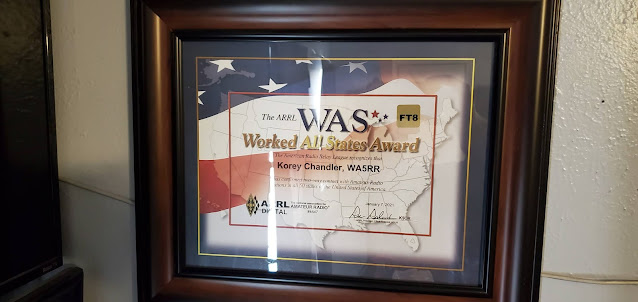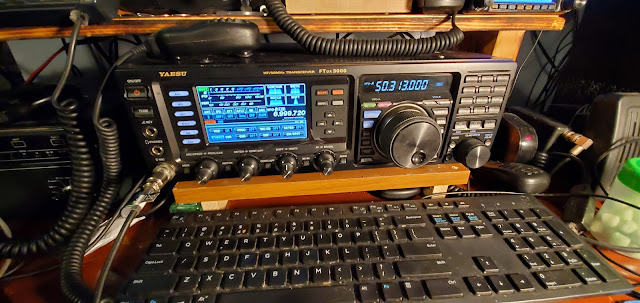Achievement Unlocked!

Since COVID-19 reared its ugly head around March of 2020, it has been a year of uncertainty. My job as a project manager let me work from home for most of the year. With my work laptop set up next to my shack computer, I had FT8 going almost constantly. The sporadic-E season let me earn 6-meter Worked All States and I kept going on HF after the conditions shifted. I achieved the Digital Mixed Worked All States award from the ARRL a few weeks ago! The certificate finally arrived today. My next goal is to earn my Digital 5BWAS (5-band WAS) before the end of the year! 73, Korey--WA5RR

